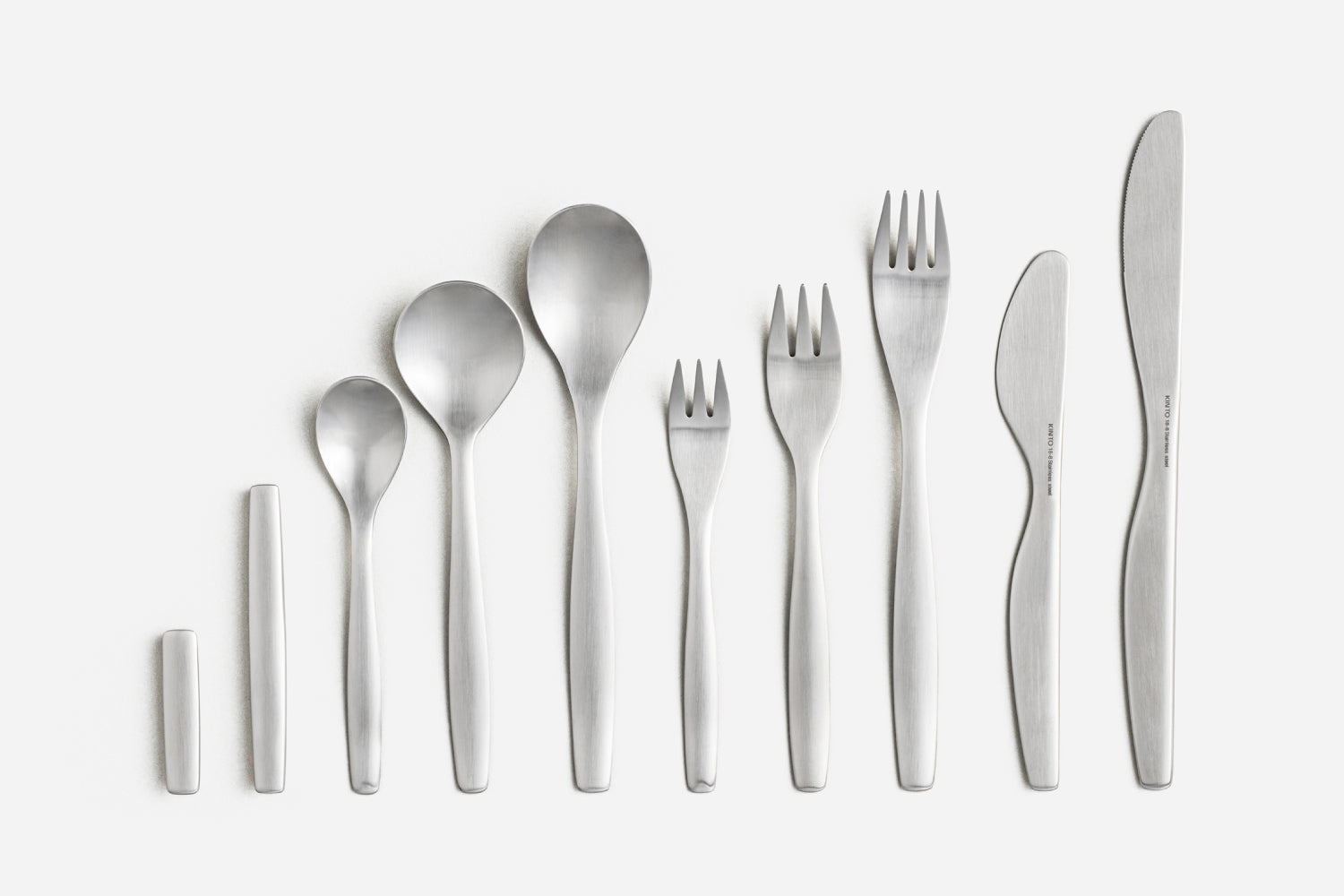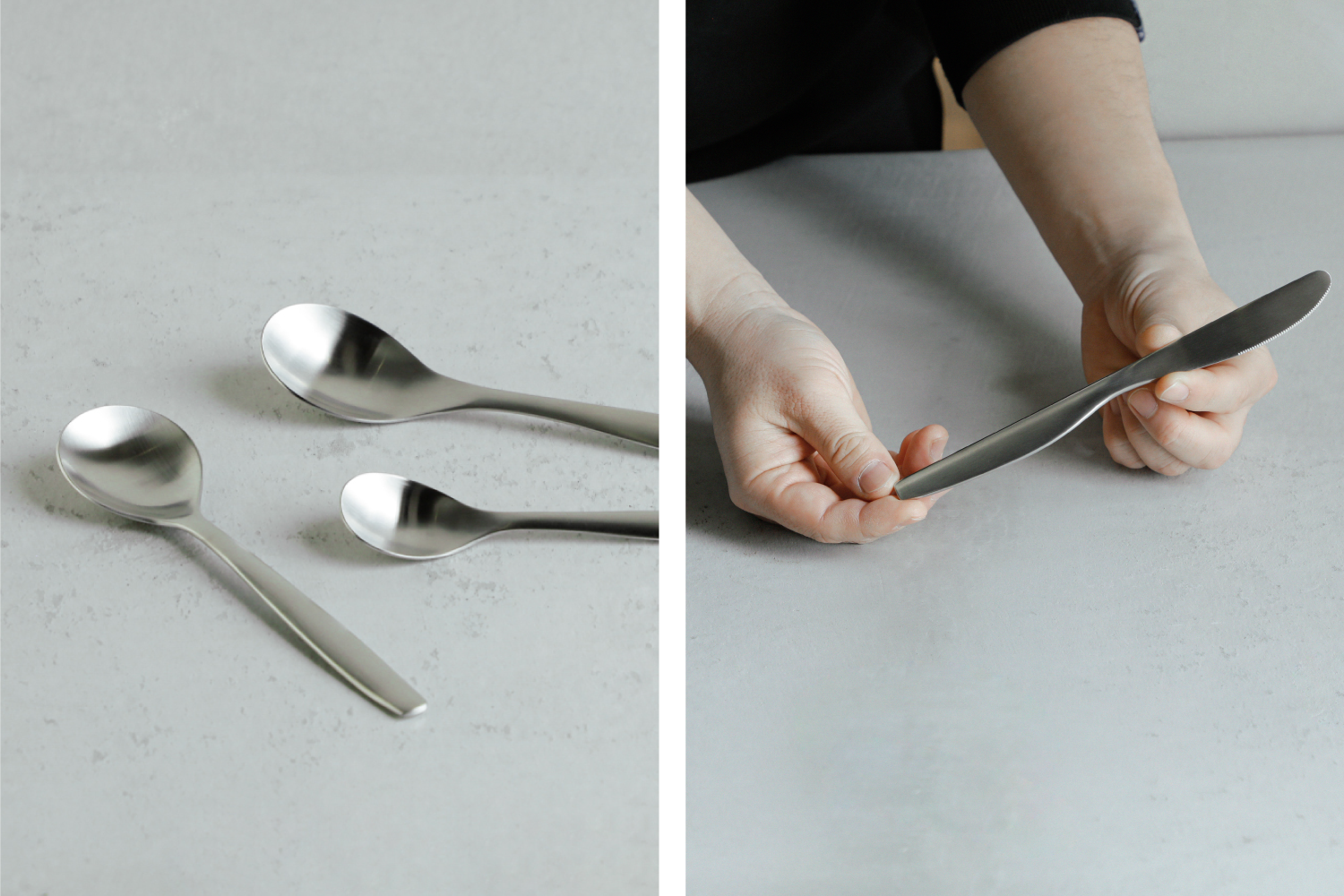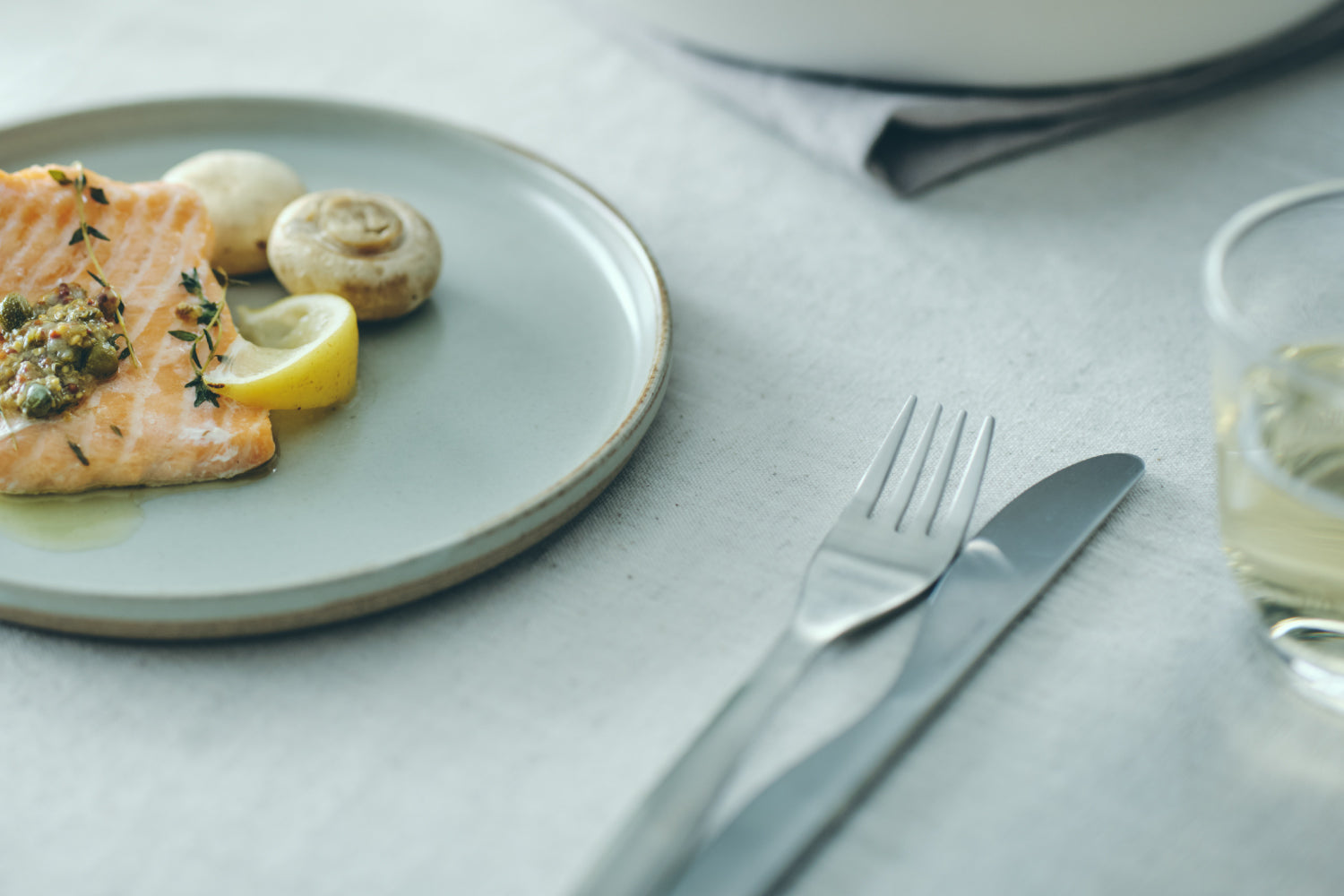HIBI, meaning "day to day" in Japanese, is designed to be timeless basics for the everyday table. To mark the relaunch of our HIBI cutlery line, we interviewed product designer Shin Azumi about his inspiration and design process.
What were the key considerations in designing the HIBI cutlery?
To design products for everyday use, I always start by examining my own personal experience. I dug deep into my memory to remember which knives, forks and spoons I felt were easy to use, which were pleasant to eat with, and why. My goal was to create cutlery that would bring warmth to the table even when you are eating alone, and would make dining with friends and family even more enjoyable.
To design products for everyday use, I always start by examining my own personal experience. I dug deep into my memory to remember which knives, forks and spoons I felt were easy to use, which were pleasant to eat with, and why. My goal was to create cutlery that would bring warmth to the table even when you are eating alone, and would make dining with friends and family even more enjoyable.

How did you develop and finalize the design?
HIBI cutlery had to fit the Japanese lifestyle in terms of size and usability. But I also wanted it to be distinct and alluring on the international market. This meant that I, as a Japanese designer, had to advance (just a little bit) these utensils invented and refined by Western civilization over thousands of years. To find the delicate balance between the old and the new, I had to be respectful of the history and cultural implications of tableware design, which was a humbling experience.
I decided to focus on enhancing the functionality and versatility of the pieces, with the intent that they could be used every day in a modern setting.
For example, I considered various scenarios and common foods to understand what factors contribute to usability. What foods do we cut, scoop, stab or twirl every day? Which part of our fingers and palms do we support the cutlery with? How do we manipulate it? Where should the center of gravity be for it to feel comfortable? I wanted to consider as many situations as possible to finetune my design.
After determining the overall direction, I took even more time to perfect the finer details. Our sense of touch is incredibly sharp and delicate. Even if an object looks identical to the eye, our lips and fingers will tell us that some are pleasant to the touch and others are not. With CAD software and 3D printers, it is now easy to create designs and build full-scale prototypes, so I experimented and experimented until I found the designs that matched the level of pleasantness I was seeking. They are very small objects, but I think I made about three boxes of prototypes.
Finally, because forks, knives and spoons are often used together and in multiples, I made sure that they are in proportion to each other as well as to plates and bowls, so the table looks nice when it is set.

What were the key points you focused on in the design process for each item?
The Knife
Humans have been fascinated with knives and blades since time immemorial, and I think even a table knife should have this quality. For this design, I started by observing how our hands and fingers hold a knife, which points and surfaces we touch. I then created a shape that would allow our fingers to apply pressure effectively while being pleasant to hold. The HIBI knife has a gentle wavy contour, but by adding an angular edge that runs all the way from the handle to the blade, it retains a sense of force (i.e., sharpness, reliability) that is essential to a knife.
The Spoons and Forks
Our lips can feel the subtle difference in the edges and tips of spoons and forks, so I paid a lot of attention to these details to ensure a pleasant experience. For the spoons in particular, I adjusted the size, width and depth of each so that they feel comfortable in the mouth but do not look too ordinary.
The Butter Knife
I like to have bread for breakfast, and butter knives have always held a special appeal for me. This was my first time designing one, but I am pleased to say it is an object that I myself would want to use every day.

How would you like people to use HIBI cutlery?
I hope people enjoy their everyday meals with HIBI cutlery. And if they decide to share their pleasure with guests by owning a few extra pieces, that would make me even happier.

DESIGNER PROFILE
Shin Azumi
Established ‘a studio’ in 2005 in London, UK. His design works include consumer products, furniture, lighting, electronics and audio equipments as well as spatial design for shops, restaurants, and exhibitions. Since 2016, he is taking the professorship at Hosei University, Faculty of Engineering and Design, in Japan.







